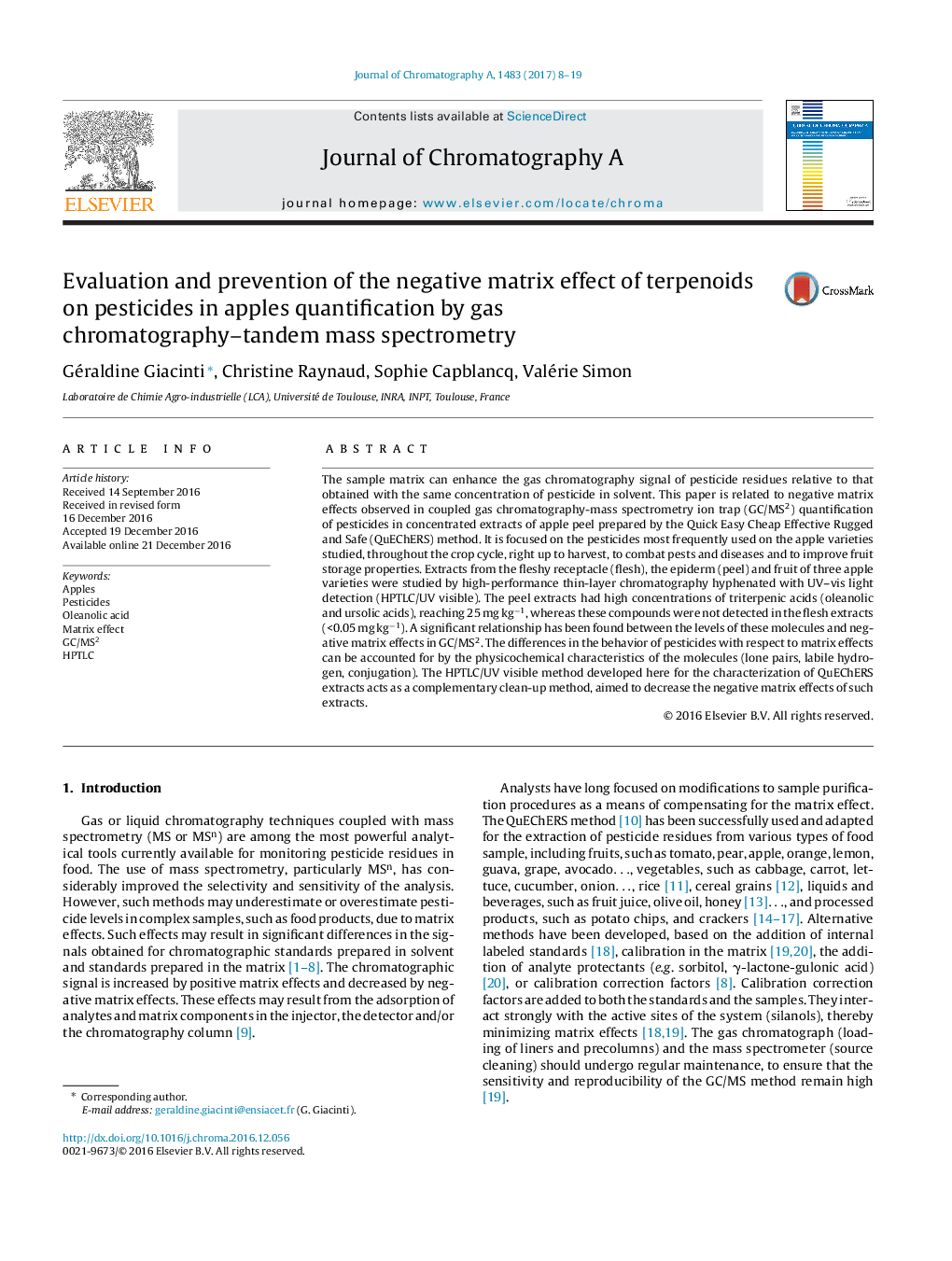| Article ID | Journal | Published Year | Pages | File Type |
|---|---|---|---|---|
| 5135897 | Journal of Chromatography A | 2017 | 12 Pages |
â¢Terpenic acid levels affect matrix effects in pesticide quantification by GC/MS2.â¢Interactions between pesticides and terpenic acids were investigated.â¢The combination of QuEChERS and HPTLC is proposed for optimal clean-up.
The sample matrix can enhance the gas chromatography signal of pesticide residues relative to that obtained with the same concentration of pesticide in solvent. This paper is related to negative matrix effects observed in coupled gas chromatography-mass spectrometry ion trap (GC/MS2) quantification of pesticides in concentrated extracts of apple peel prepared by the Quick Easy Cheap Effective Rugged and Safe (QuEChERS) method. It is focused on the pesticides most frequently used on the apple varieties studied, throughout the crop cycle, right up to harvest, to combat pests and diseases and to improve fruit storage properties. Extracts from the fleshy receptacle (flesh), the epiderm (peel) and fruit of three apple varieties were studied by high-performance thin-layer chromatography hyphenated with UV-vis light detection (HPTLC/UV visible). The peel extracts had high concentrations of triterpenic acids (oleanolic and ursolic acids), reaching 25 mg kgâ1, whereas these compounds were not detected in the flesh extracts (<0.05 mg kgâ1). A significant relationship has been found between the levels of these molecules and negative matrix effects in GC/MS2. The differences in the behavior of pesticides with respect to matrix effects can be accounted for by the physicochemical characteristics of the molecules (lone pairs, labile hydrogen, conjugation). The HPTLC/UV visible method developed here for the characterization of QuEChERS extracts acts as a complementary clean-up method, aimed to decrease the negative matrix effects of such extracts.
